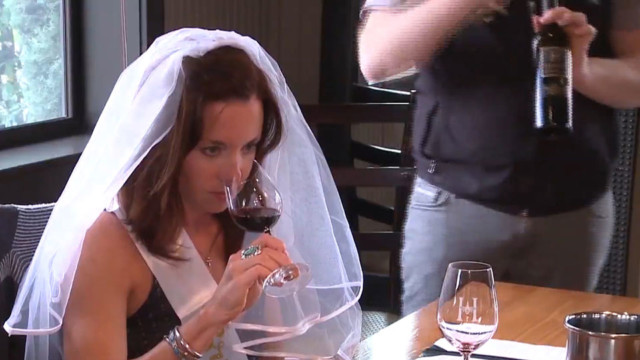In response to U.S. President Donald Trumps plans to put tariffs on Chinese goods, the Chinese government is proposing tariffs on three billion dollars of U-S products and commodities.
That includes wine, which would be hit with a 15-percent tariff.
CGTN’s Mark Niu heads to California’s Napa Valley for reaction.
At tasting rooms in California’s Napa Valley, customers enjoy some of the best wine produced in the United States.
Upon hearing news that China could slap tariffs on California wines, some expressed concern about a possible trade war with this country’s biggest trading partner.
“China’s a big emerging market for California wine and everything is related whether it’s steel products or aluminum,” said wine enthusiast Ryan Bjorkquist. “Everything does have a cause and effect. So whether it’s electronics or wine, an emerging trade war…I don’t think is good for anybody.”
“The Chinese market—they can buy wine from Europe, they can buy the wine from South America, they can buy wine from the United States,” said wine drinker Angela Dilaura. “There are a lot of options and in this type of global economy it’s important that the United States remains competitive.”
Napa Valley is the most famous winemaking region in the United States. It’s composed of 225,000 acres of land and responsible for just 4% of the total volume of California Wine. But it produces about a third of the total value.
“We’re at the top of the luxury pyramid. And there’s not that much production, so not that many consumers. So, every time you go up in price, there’s fewer and fewer people that are able to afford those products,” said Michael Honig, President of Honig Vineyard and Winery.
Honig is a third generation family vineyard.
It was also one of the first to enter the China market more than a decade ago.
Since then, Michael Honig and his team have increased exports to China tenfold.
He’s also seen an increase in Chinese tourists coming to his tasting room and ordering bottles to be shipped back home to China through the delivery service Gliding Eagle.
The tariffs would make that pricier too.
“If I sell something for a dollar, by the time it reaches the port in China it’s marked up 50 cents, so it’s $1.50. The new price would go to $1.65,” said Honig. “Now you have countries… a great example is Australia, which next year in 2019, their tariffs and duties go down to zero. So we are trying to compete not only with other California producers, but wineries from around the world.”
Currently only about three to four percent of Honig’s wine are exported to China.
But as Napa Valley growers aim for a bigger share of China’s growing wine market, they only hope U.S. tariffs do not get in the way.
 CGTN America
CGTN America

